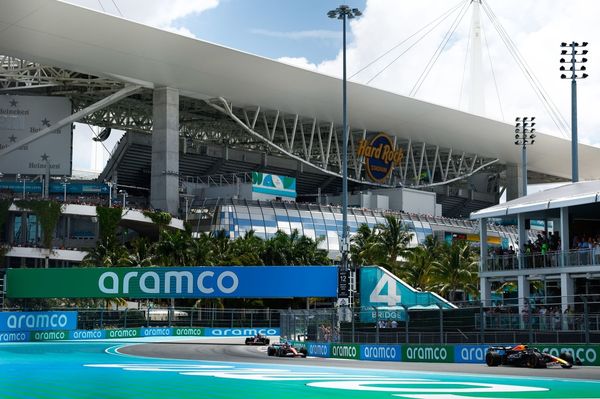
Dec arabica coffee (KCZ23) this morning is up +1.90 (+1.15%), and Nov ICE robusta coffee (RMX23) is down -41 (-1.55%).
Coffee prices this morning are mixed, with arabica climbing a 3-3/4 month high. Today's rally in the Brazilian real (^USDBRL) to a 3-week high against the dollar is bullish for arabica coffee prices. The stronger real discourages export selling from Brazil's coffee producers. Dollar strength today is weighing on robusta coffee prices.
Shrinking coffee inventories are supportive for coffee prices higher as ICE-monitored arabica coffee inventories Monday fell to an 11-1/2 month low of 417,296 bags. Also, ICE-monitored robusta coffee inventories are just above the record low of 3,374 lots posted on August 31.
In a supportive factor for robusta coffee, Vietnam's General Department of Customs reported on October 10 that Vietnam coffee exports in the first nine months of this year (Jan-Sep) fell -8.3% y/y to 1.25 MMT. Also, Vietnam's coffee harvest this year is expected to drop more than -7% to 1.67 MMT, the smallest crop in four years, according to a Bloomberg survey of exporters and traders released on May 3. Vietnam is the world's largest producer of robusta coffee beans.
Global coffee supplies are shrinking after the International Coffee Organization (ICO) on September 14 reported that global coffee exports during Oct-Jul were down -5.7% y/y at 103.736 mln bags. Also, the Colombian Coffee Growers Federation reported on August 9 that Colombian July coffee exports fell -17% y/y to 846,000 bags. Colombia is the world's second-largest producer of arabica coffee beans. However, Honduras, the largest coffee-producing country in Central America, reported on July 31 that its coffee exports rose +63% y/y in July to 828,499 bags.
On the negative side, improved weather conditions in Brazil have sparked fund selling of coffee futures and knocked arabica coffee prices recently to a 9-1/2 month low and robusta prices to a 6-1/2 month low. Forecaster Maxar Technologies said Brazil's abundant rain should boost soil moisture for cherry growth, trigger widespread flowering of coffee plants, and boost the yields for Brazil's 2024/25 coffee crop. Somar Meteorologia reported Monday that Brazil's Minas Gerais region received 25.7 mm of rain in the past week, or 82% of the historical average. Minas Gerais accounts for about 30% of Brazil's arabica crop.
Cecafe reported on October 11 that Brazil's Sep arabica coffee exports fell -20% y/y to 2.4 million bags, the lowest for that month in 6 years. However, demand for robusta coffee remains strong as Brazil Sep robusta exports rose more than fourfold to 624,999 bags. Brazil is the world's largest producer of arabica coffee and the second-largest producer of robusta coffee.
Arabica coffee prices found support when Conab, Brazil's crop forecasting agency, raised its 2023 Brazil arabica coffee crop estimate on September 20 to 38.2 million bags from May's forecast of 37.9 million bags.
The U.S. Climate Prediction Center on June 8 declared an El Nino weather event, which is likely to be supportive of coffee prices. The U.S. Climate Prediction Center said sea surface temperatures across the equatorial Pacific Ocean had risen 0.5 degrees Celsius above normal, and wind patterns have changed to the point where El Nino criteria have been met. An El Nino pattern typically brings heavy rains to Brazil and drought to India, negatively impacting coffee crop production. The El Nino event may bring drought to Vietnam's coffee areas late this year and in early 2024, according to an official from Vietnam's Institute of Meteorology, Hydrology, and Climate Change.
The USDA Foreign Agricultural Service forecasted in its June biannual report, released on June 22, that world coffee production in 2023/24 will increase +2.5% y/y to 174.3 million bags, with a +6.9% increase in arabica production to 96.3 million bags, and a -2.4% decline in robusta production to 78.0 million bags. USDA FAS forecasts that 2023/24 Brazilian coffee production will rise by +14.5% to 67.9 million bags, while Vietnam's 2023/24 production will fall -3.5% to 30.2 million bags. USDA FAS forecasts that 2023/24 ending stocks will edge higher by +0.8% to 31.8 million bags from 31.6 million bags in 2022-23.
Illustrating a tight coffee supply picture in 2022/23, the ICO said the global 2022/23 coffee market deficit widened to -7.3 mln bags from a -7.1 mln bag deficit in 2021/22. ICO reported that 2022/23 global coffee production increased +1.7% y/y to 171.27 mln bags, but that 2022/23 global coffee consumption increased +1.7% y/y to a larger 178.53 mln bags.
On the date of publication, Rich Asplund did not have (either directly or indirectly) positions in any of the securities mentioned in this article. All information and data in this article is solely for informational purposes. For more information please view the Barchart Disclosure Policy here.






